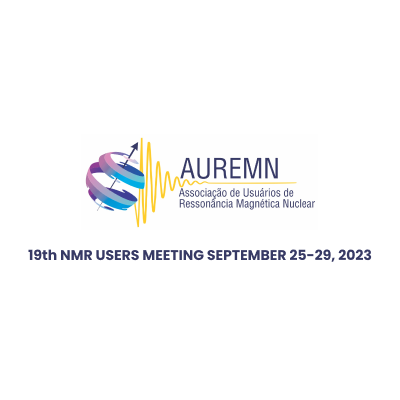Proceedings of the NMR USERS MEETING
PROCEEDINGS OF THE 19ᵗʰ NMR USERS MEETING - Vol.2 2023
Development and Characterization of Nanoporous Materials Using Cryoporometry and Nuclear Magnetic Resonance Techniques
How to cite this paper?
To cite this paper use one of the standards below:
How to cite this paper?
Time domain NMR (TDNMR) is one the most effective methods for porous media characterization. While pores with dimensions in the range of hundreds of nm to tens of μm can be characterized by various NMR-TD techniques based on relaxation and molecular diffusion, pores with dimensions in the range of tens to hundreds of nm can be characterized using the so-called cryoporometry techniques. In general, cryoporometry explores variations in the melting temperatures of fluids confined in nanoscale spaces, which can be characterized by monitoring the emergence or (disappearance) of the NMR signal from a liquid phase as a function of temperature. This is usually achieved using standard spin echo pulse sequence. We present an alternative approach to perform NMR-cryoporometry experiments using dipolar echoes pulse sequences. By combining a dipolar echo pulse sequence, such as mixed Magic Sandwich Echoes (mixed MSE), with dipolar filters, such as spin echo or Goldman-Shen, the signals from the full, solid + liquid, and the liquid phase can be obtained almost simultaneously. This makes possible to calculated the fraction of the liquid phase at a given temperature directly from the signal intensities, i.e., without the need of an extra experiment for correcting the temperature dependence of the magnetization with temperature, as in the spin echo-based experiments. The approach was tested in controlled pore glasses (CPG) of different pores sizes, using water and terc butanol as probe fluids. In comparison with the experiments performed with standard spin echo, the dipolar echo approach presented some advantages such as faster execution and processing time, easier determination of the temperature range and conditions for avoiding the appearing of supercooled fluid at low temperatures. Additionally, we will show some applications of the approach t to characterize mesopore distribution in materials such porous biopolymers, natural biomass and soils.
FAPESP, CAPES, CNPQ (grant 308760/2022-0)
- 1 USP - São Carlos
- 2 Universidade Federal Fluminense
- TD-NMR
Streamline your Scholarly Event
With nearly 200,000 papers published, Galoá empowers scholars to share and discover cutting-edge research through our streamlined and accessible academic publishing platform.
Learn more about our products:
How to cite this proceedings?
This proceedings is identified by a DOI , for use in citations or bibliographic references. Attention: this is not a DOI for the paper and as such cannot be used in Lattes to identify a particular work.
Check the link "How to cite" in the paper's page, to see how to properly cite the paper

